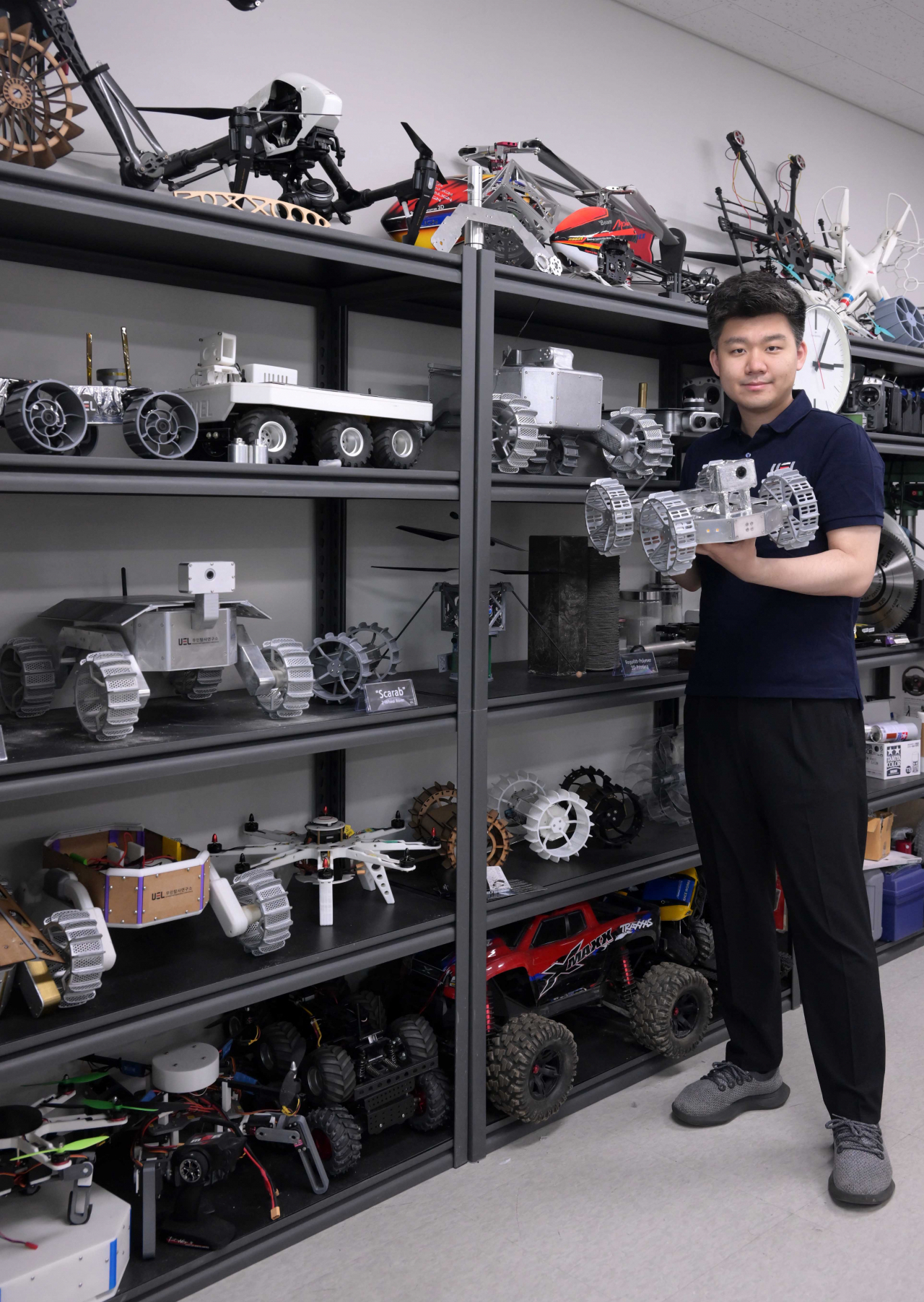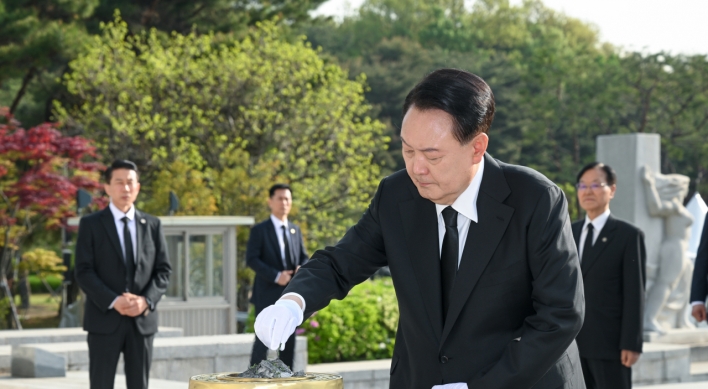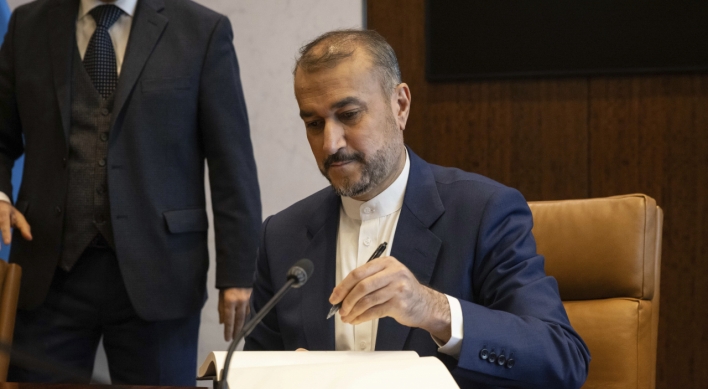[Beyond Earth] Korean lunar rover developer aims for first mission in 2032
Unmanned Exploration Laboratory works on crafting space-level roving vehicles
By Kan Hyeong-wooPublished : May 29, 2023 - 14:19

South Korea’s consecutive successes with the homegrown Nuri rocket and lunar orbiter Danuri have led to the government’s ambitious road map to land on the moon in 2032 and on Mars in 2045. While the spotlight has been shining on rockets and satellites, less attention has been paid to the sector of space robotics.
Unmanned Exploration Laboratory, a Korean startup led by a young CEO, is working relentlessly to develop lunar-roving vehicles as the country’s only player to make such a space robot.
“What we are focusing on at the moment is to develop a lunar rover that can go to the moon on the Korean rocket in 2032,” Cho Nam-suk, the 28-year-old CEO of UEL, told The Korea Herald in an interview at the startup’s office in Seoul on May 22.
He presented the three different classes of lunar rovers developed by UEL: Haetae, Scarab and Geobugi. Haetae is a mythical creature that can distinguish good and bad in Korean folklore. Geobugi means turtle in Korean.
The Haetae-class four-wheel rover was built to explore the terrain, conduct experiments, operate small-scale equipment and carry payloads with an external solar panel array to provide electricity. The Haetae-class rover has an operational range of up to 60 meters with a net weight of 8 kilograms.
The Scarab-class two-wheel rover equipped with sensors and a high-resolution camera was designed to explore terrains that are difficult to be reached with larger robotic systems. The two-wheel rover can operate over the range of 20 meters with a weight of 1.7 kg.
The Geobugi-class four-wheel rover was developed with technology that can fold the rover’s camera mount and wheels to fit in small payload bays. The foldable rover has a lower risk of body damage during liftoff and landing sequences. It has a net weight of 3 kg and an operational range of 30 meters.

“We have conducted numerous tests with these rovers. They work well right now. But the level of operation is for experiments on the Earth. As we are trying to go to space, the design of the electronic boards inside the rovers has to change and all of their parts have to be swapped with ‘space-level’ parts,” said Cho.
The young CEO voiced confidence when he was asked whether his company would be able to make the necessary upgrades in nine years to be onboard Korea’s lunar lander. Cho pointed out that companies with more experience and data in the lunar rover sector will be given more opportunities for future space missions.
“When I meet with NASA officials, what they say is that they will go to Mars. But they will only take those who have been to the moon to Mars with them. They say it would be difficult for a company, which has never been to the moon, to participate in Mars-related projects. For instance, the companies that made spacesuits in the initial phases of space exploration are still making the suits and the space life-support systems,” he said.
Cho took the example of ispace, a Japanese lunar rover developer that is considered the global leader in the lunar surface exploration sector, mentioning that it took over 10 years for the Japanese firm to develop the lunar rover. He underscored that UEL’s rovers have an immense amount of data and algorithms accumulated from years of experiments and research.
As the 28-year-old CEO explained the tough entry barrier of the space industry, Cho called for urgent and intensive support in order to advance Korea’s lunar roving vehicle competitiveness. The startup has not been able to receive any series of investments since its establishment in 2016.
“The portion of the government funding in our company is less than 10 percent of the total budget. I don’t know if I should say this, but we are still holding up because we are young. Sending robotic systems to space is something that someone has to do in Korea,” he said.
South Korea’s auto giant Hyundai Motor Group recently announced the plan to develop and showcase a lunar rover by 2027. As for potential collaboration with the country’s fourth-largest conglomerate by market capitalization, Cho said he is open to all possibilities.
“Many people question why we should spend a lot of money on space and ask, ‘Wouldn’t it be OK if we go to space later instead of now? The moon is no man’s land right now. But if we place a robot or an object there, we could potentially claim the right of possession of that lunar area,” he said.












![[Today’s K-pop] BTS pop-up event to come to Seoul](http://res.heraldm.com/phpwas/restmb_idxmake.php?idx=644&simg=/content/image/2024/04/17/20240417050734_0.jpg&u=)





![[KH Explains] Hyundai's full hybrid edge to pay off amid slow transition to pure EVs](http://res.heraldm.com/phpwas/restmb_idxmake.php?idx=652&simg=/content/image/2024/04/18/20240418050645_0.jpg&u=20240419100350)

